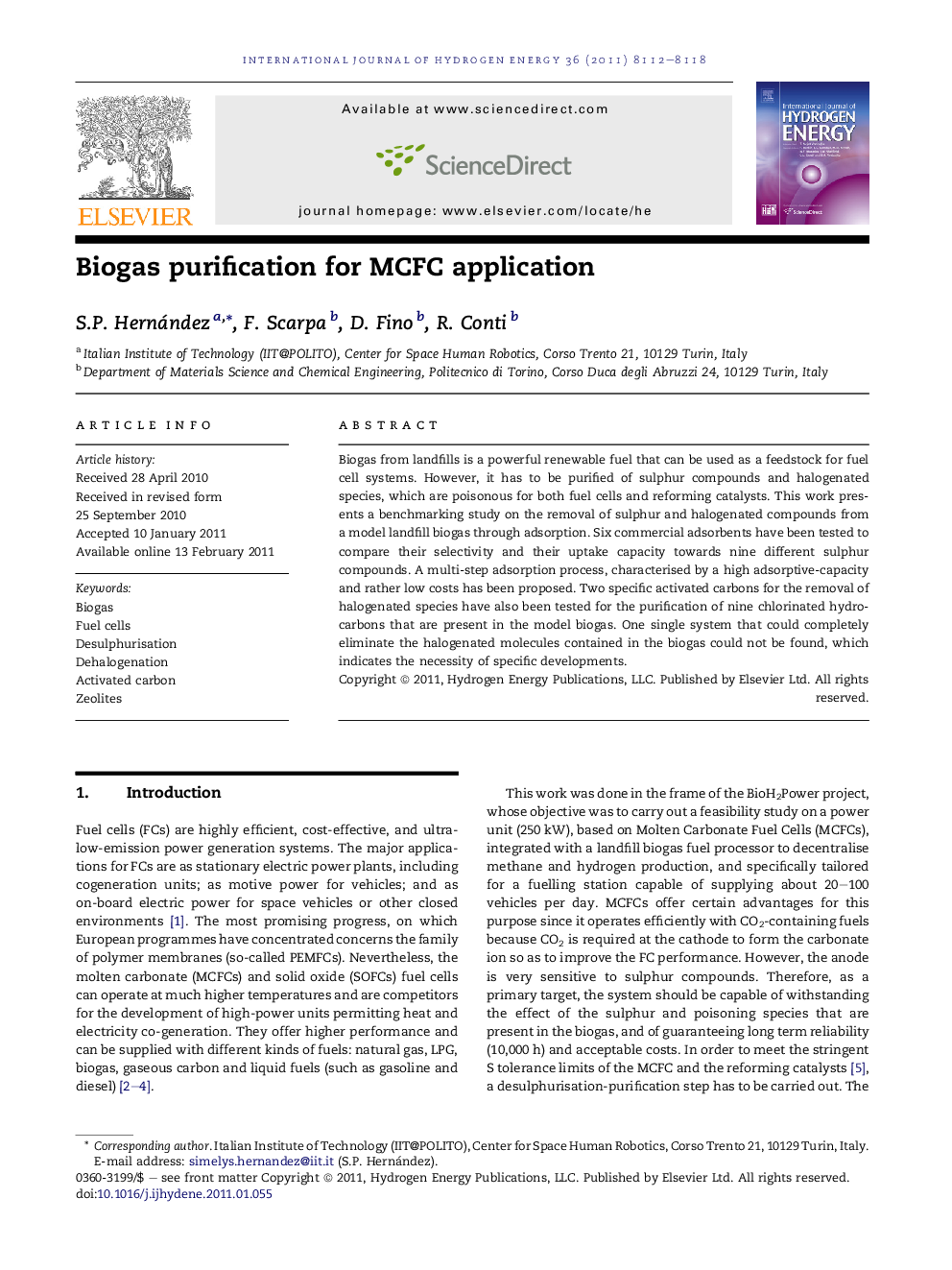| Article ID | Journal | Published Year | Pages | File Type |
|---|---|---|---|---|
| 1279357 | International Journal of Hydrogen Energy | 2011 | 7 Pages |
Biogas from landfills is a powerful renewable fuel that can be used as a feedstock for fuel cell systems. However, it has to be purified of sulphur compounds and halogenated species, which are poisonous for both fuel cells and reforming catalysts. This work presents a benchmarking study on the removal of sulphur and halogenated compounds from a model landfill biogas through adsorption. Six commercial adsorbents have been tested to compare their selectivity and their uptake capacity towards nine different sulphur compounds. A multi-step adsorption process, characterised by a high adsorptive-capacity and rather low costs has been proposed. Two specific activated carbons for the removal of halogenated species have also been tested for the purification of nine chlorinated hydrocarbons that are present in the model biogas. One single system that could completely eliminate the halogenated molecules contained in the biogas could not be found, which indicates the necessity of specific developments.
